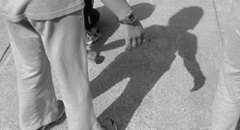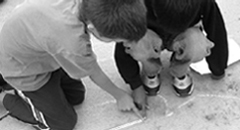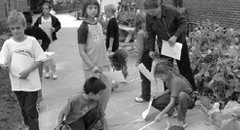
|

|

|
Documentation serves different purposes during different stages of learning. The criteria for what counts as quality documentation depend on the context. What seems to remain constant is that quality documentation focuses on some aspect of learning--not just "what we did"--and it prompts questions and promotes conversations among children and adults that deepen and extend learning.
Here are some questions to ask when creating or examining documentation that tries to make learning visible. These questions may change depending on your purpose or context.
For collecting documentation to aid your own reflection
- Am I documenting my own words and actions as well as the students'?
- Does the documentation help me re-examine things I did not initially notice or understand?
- Does the documentation help me identify key moments of learning or aspects of the learning context?
- Does the documentation suggest next steps for teaching or learning?
- Does the documentation raise questions I can discuss with my colleagues or students?
- What other documentation might I collect to extend this inquiry? Would my documentation be strengthened by using more than one medium?
For using documentation in the class with your students and colleagues
- Does the documentation focus on learning, not just something we did?
- Does the documentation promote conversation or deepen understanding about some aspect of learning?
- Does the documentation help me to address a particular question I have about learning?
- When is an appropriate time to share the documentation with my students?
For documentation that is to be shared more widely
- Does the documentation provide enough context for the viewer to understand the piece?
- Does the documentation focus on learning, not just on what was done?
- Does the documentation focus on the process as well as the product(s) of learning?
- Does the documentation clearly communicate the aspects of learning I consider most important?
- Does the documentation include an interpretation by teachers and/or students?
- Does the documentation include more than one medium?
- Does the documentation have a title?
- Is the documentation presented in a way that draws the viewer in?
- Does the documentation add to our collective body of knowledge and promote conversations about learning?
© 2005 Making Learning Visible Project at the Harvard Graduate School of Education
Related Examples:
Viewing these pieces in relation to the associated questions may help to ground the concept of how the criteria of what constitutes documentation may change depending on your purpose(s) and the audience for your documentation.
For collecting documentation to aid your own reflection:
I Want to Help You But ?
For using documentation in the class with your students and colleagues:
Up, Up, Up?
For documentation that is to be shared more widely:
Creating a Culture of Critique
See also:
What is Documentation?
Features of Documentation
[Home] [Site Map]